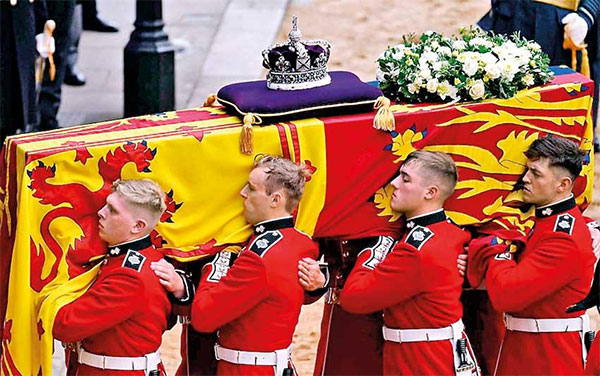The final journey of Queen Elizabeth II’s coffin from Buckingham Palace to the Houses of Parliament, where she will lie in state for four days, took place on Wednesday. The ceremony was marked by solemn pageantry.
Prior to the march from the monarch’s official London residence to the ancient Westminster Hall at Parliament, crowds started to assemble along the flag-lined route outside the palace. The royal family walked behind the casket, led by King Charles III.
Hours before the funeral procession started, thousands of people gathered on The Mall outside Buckingham Palace and along the banks of the River Thames.
The gun carriage passed through the wrought iron gates of the palace around thirty minutes before the procession was scheduled to begin.
Maj. Gen. Christopher Ghika of the Household division, who is in charge of planning the ceremonial elements of the queen’s funeral, said, “It’s a very sad day, but it’s our last opportunity to do our duty for the queen and it’s our first opportunity to do it for the king, and that makes us all very proud.
Heathrow Airport in London grounded any flights that might disturb the procession. The modifications led to the cancellation of 16 flights by British Airways.
Changes would “guarantee silence over central London as the ceremonial procession progresses from Buckingham Palace to Westminster Hall,” the airport stated in a statement.
Since the queen’s passing, the troops taking part in the parade have been preparing. The King’s Troop Royal Horse Artillery horses have also.

